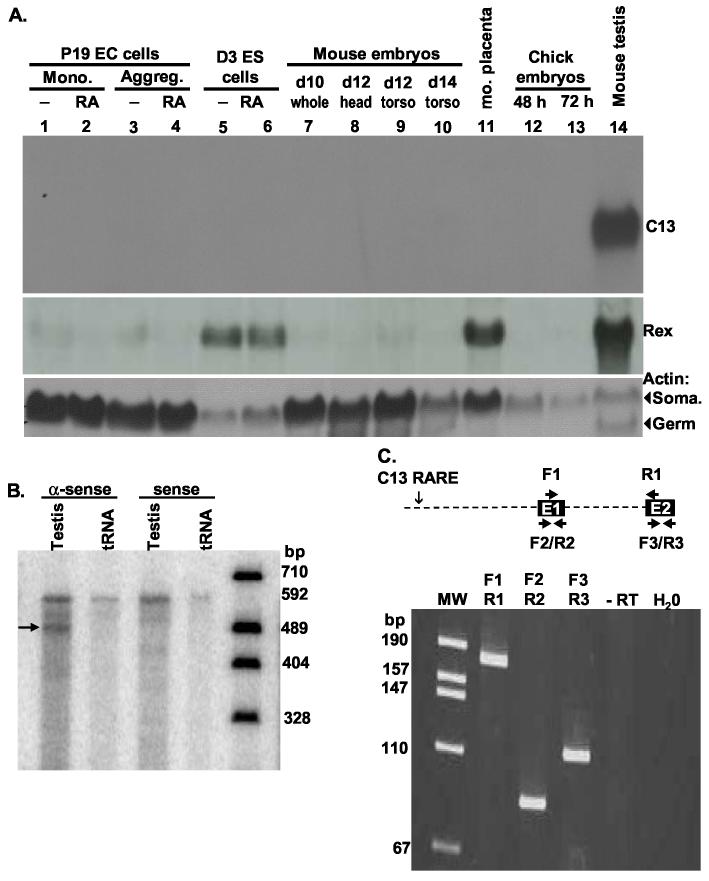Fig. 2.
The C13 RARE lies upstream of an RNA expressed only in testis. A. Northern blot of RNA isolated from P19 embryonal carcinoma (EC) grown as monolayers (lanes 1, 2) or aggregates (lanes 3, 4) in the presence (lanes 2, 4) or absence (lanes 1, 3) of 0.5 μM RA, D3 embryonic stem (ES) cells grown as aggregates in the presence (lane 6) or absence (lane 5) of 0.5 μM RA, whole day 10 mouse embryos (lane 7), day 12 mouse embryo heads (lane 8) and torso (lane 9), day 14 mouse embryo torso (lane 10), day 14 placenta (lane 11), 48 hr or 72 hour chick embryos (lanes 12, 13), and adult strain 129 testis (lane 14). The same blot was probed with Rex1 (Zfp-42, expressed in stem cells, placenta, and spermatocytes (Rogers et al., 1991) and the constitutively expressed Actin (Act). Actin has both somatic (Soma.) and germ cell mRNA isoforms as illustrated by the two bands in testis RNA. B. A probe that is anti-sense to nt. 1 - 527 of testis EST BU936305, but not sense, protected an RNA of this size in RNA isolated from testis. The same probes failed to protect any RNAs from unstaged ovaries or proestrus, metaestrus, diestrus, or estrus ovaries (not shown). C. An RT-PCR using the primer pairs shown in the diagram amplified the products predicted by the alignment of the ESTs to the genome. Primers spanning the intron between exon 1 (E1) and 2 (E2) (F1 and R1) yielded a fragment of 181 nt., but not the fragment of 1064 bp that would have been generated from genomic DNA or unspliced RNA. Primers F2 and R2 in exon 1 and primers F3 and R3 in exon 2 yielded fragments of 85 nt and 99 nt. No amplification occurred in reactions lacking reverse transcriptase (-RT) or RNA (H20) or in reactions with ovary RNA (not shown).

